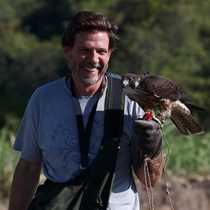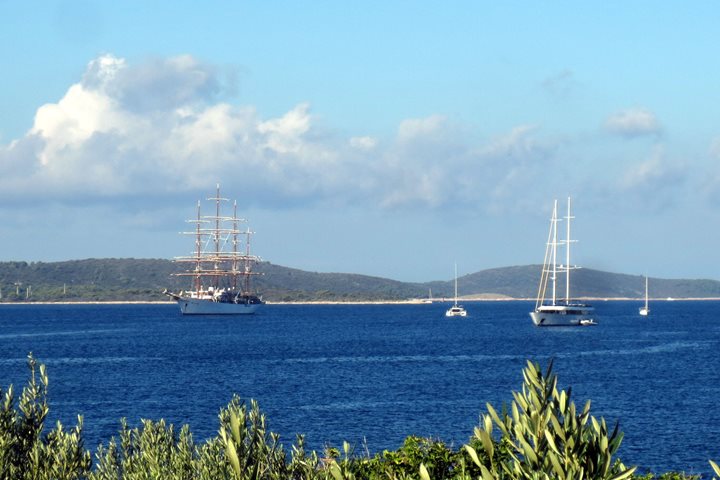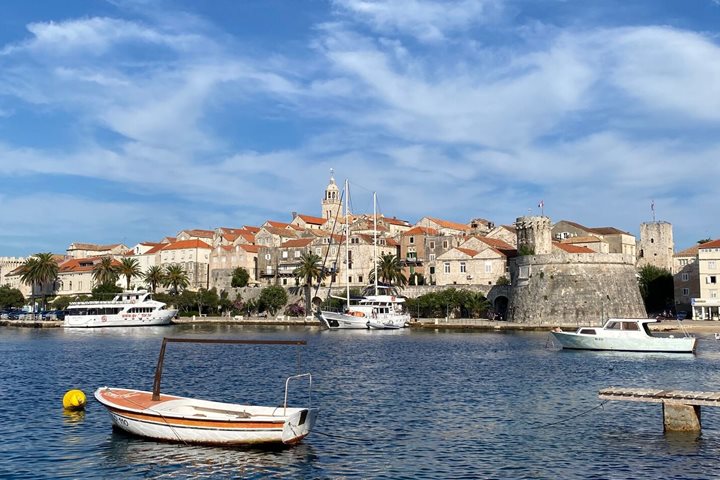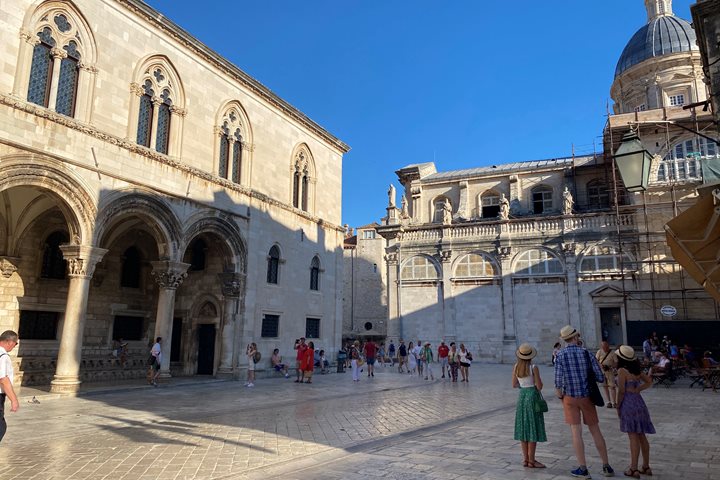We had calm seas as we motored into the jewel-like harbor of Korcula. We docked in the old city, adjacent to the ancient city wall and began out short walking tour of this island paradise at 9 a.m. It was Sunday morning and we were treated to a ringing chorus of church bells summoning all the faithful to mass. Our guide led us into the ancient city and explained a most interesting feature. The city is laid out in a herringbone pattern on a slight hill and thus the internal streets and homes, because they are slightly offset, are protected from harsh winds and strong sun. An ingenious plan effected through experience long before city planning was a discipline. Korcula is the home of the great explorer Marco Polo who may have left from here on his way to China. I looked with great admiration at his home trying to conjure up his spirit. It is astonishing to contemplate the boldness of his vision, leaving everything he knew to embark on a ferociously hard journey that would keep him away from home for up to five years and with no certain knowledge of precise directions.
We visited the Cathedral whose original Gothic façade has been redone in the Baroque style in the 16th century. Immediately above the entrance to the west on the façade was a wonderful carving of two lions, which represent St. Mark the gospel writer and are also the symbol of the Venetian state. What caught my eye directly below the lions were nude statues of Adam and Eve. Although done in a rather naïf style they were arresting in their simplicity. In the Cathedral sanctuary was a very fine painting of ecclesiastical figures by the noted Renaissance master Tintoretto, done ca. 1550.
We continued our walks through the narrow lanes of the city, some not wider than six feet and admired the many stone balconies and the occasional stone bridge connecting homes at the 2nd or 3rd story. The stone of the buildings is uniformly a soft honey-white limestone and the architecture of the entire city is deeply indebted to Venice, which controlled Korcula for 400 years. We then walked to the city center where we were treated to a unique theatrical performance and dance called “Moreska.” The dance reenacts the seizure of a beautiful young princess by the Black Knights, who represent the Turks, and her rescue by the White Knights, the Croats. The men danced furiously in great circles and fought spirited sword battles. On a number of occasions when they clashed sparks flew from the swords. I saw one young man who had to bandage his hand, presumably from a blow. One of the dancer’s tiny 4-year-old daughter sat in the first row by herself, cradling a small stuffed animal, and waved continually to her dad. You could see the pride in her face.
On our way back to Sea Cloud we passed some beautiful jewelry shops and—unlike Odysseus who resisted the Sirens’ call as he passed through the straights of Messina—many of us succumbed and did some shopping!
After lunch the crew raised the sails and we were breezing along at 7.6 knots. Imagine the wind alone moving 2,500 tons of ship through the water at such speed. It was exhilarating as we hove slightly to port. Later that afternoon, I gave a talk on the Black Death of 1348 and its profound impact on medieval society and how this singular disease was able to help promote the birth of a new era.
The hotel staff feted us this evening with a Croatian-style barbecue with a cornucopia of delicious Croatian specialties. Off to bed with glorious memories.









